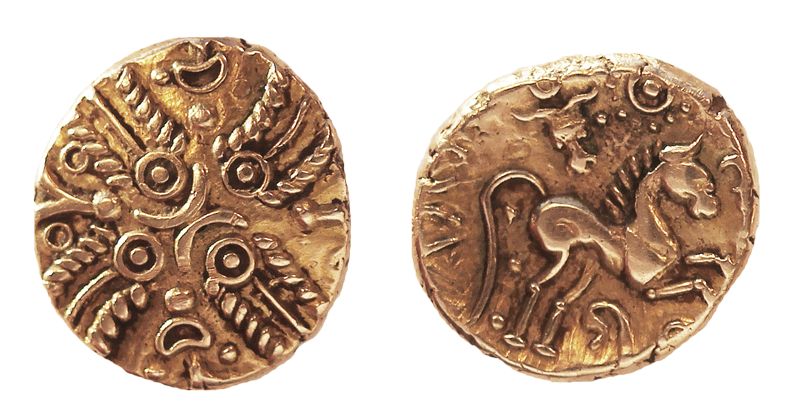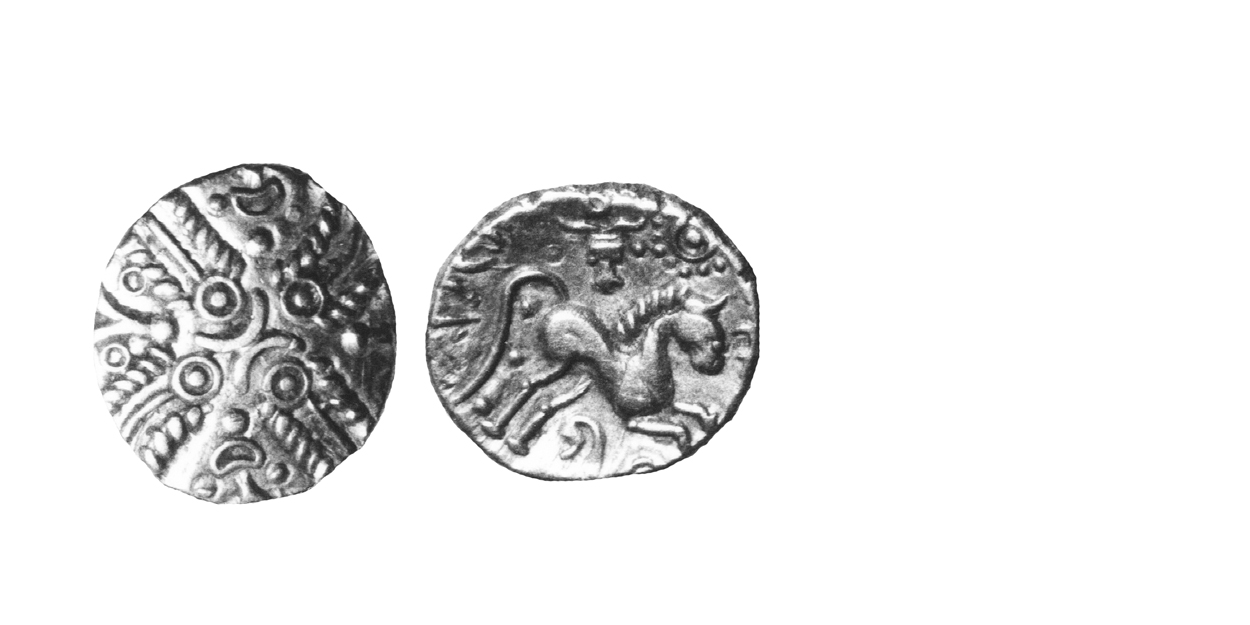
History
Early Dynastic Coinages 30—10 B. C. (Info)
Introduction
By 30 BC., all seven coin-producing tribes had mints in operation, and five were producing coins with inscriptions. Commius had started the practice by placing his name on the Atrebatic/Regnan/Belgic staters about 45 BC. Addedomaros promptly responded to this display of vanity by emblazoning his entire name across the Trinovantian/Catuvellaunian ones. This one-upmanship game spread quickly to the other tribes and by the end of the millennium, all but the Durotriges and Iceni were striking inscribed types. From 30 BC. to the end of the millennium, two additional developments shaped the coinage.
The first was a continued trend to localized coin use (63). The trade situation became increasingly rigid, with coins circulating largely within tribal boundaries. There was less and less intertribal coin flow as the century wore on and tribal areas became increasingly better-defined by the modern findspots.
The second development was the replacement of Celtic motifs by Romanized ones, especially noticeable on the Trinovantian/Catuvellaunian coinage. The designs of the gold coins became less abstract as time went on and Roman images appeared on the silver and bronze – often little more than copies of the Roman originals (64).
Next Section – Early dynastic coinages North Thames Region

